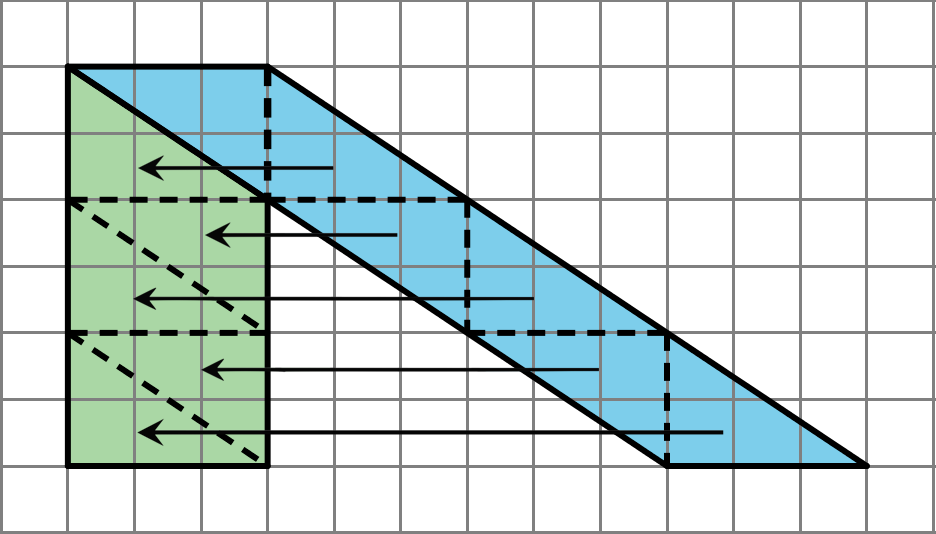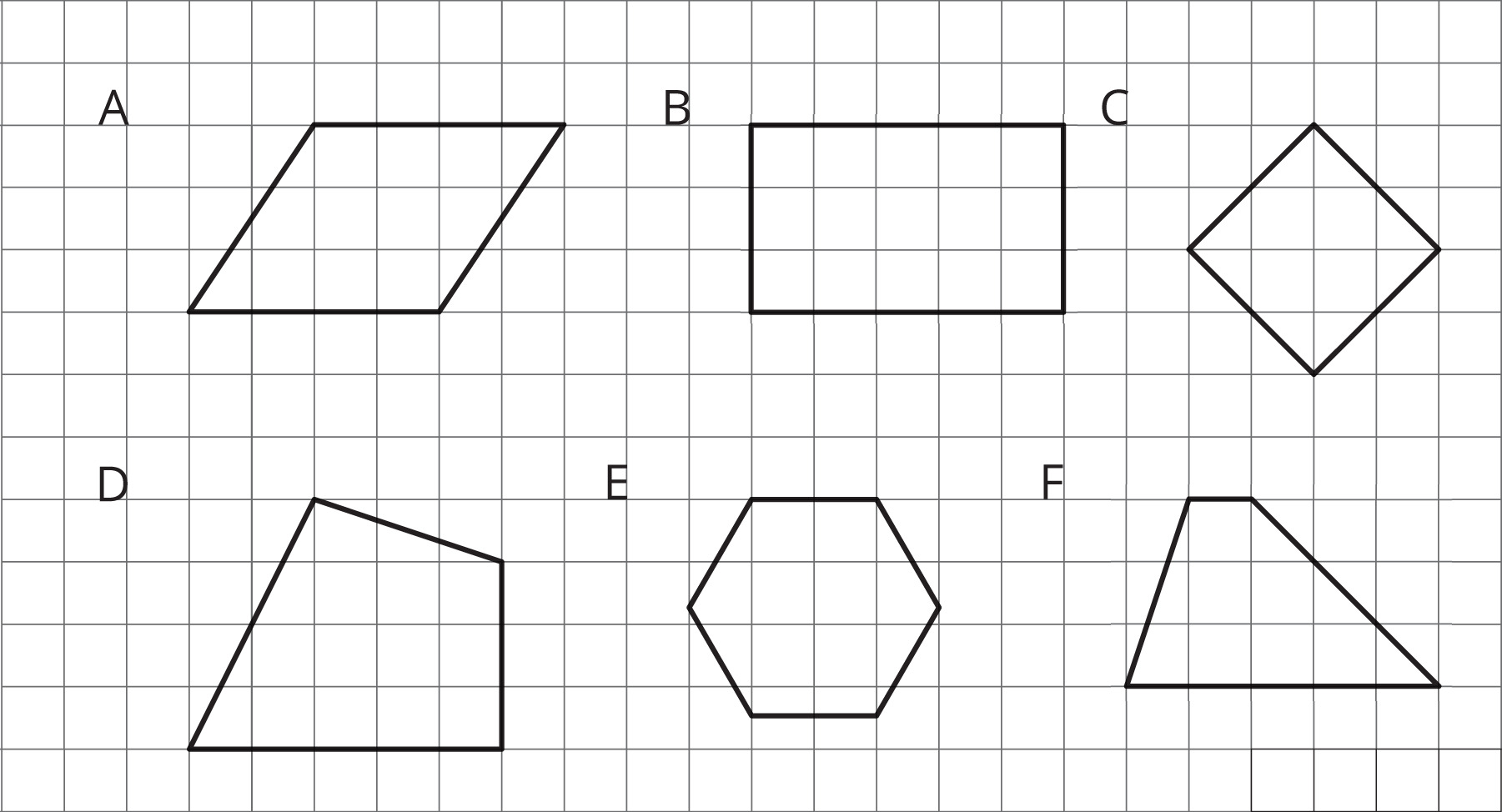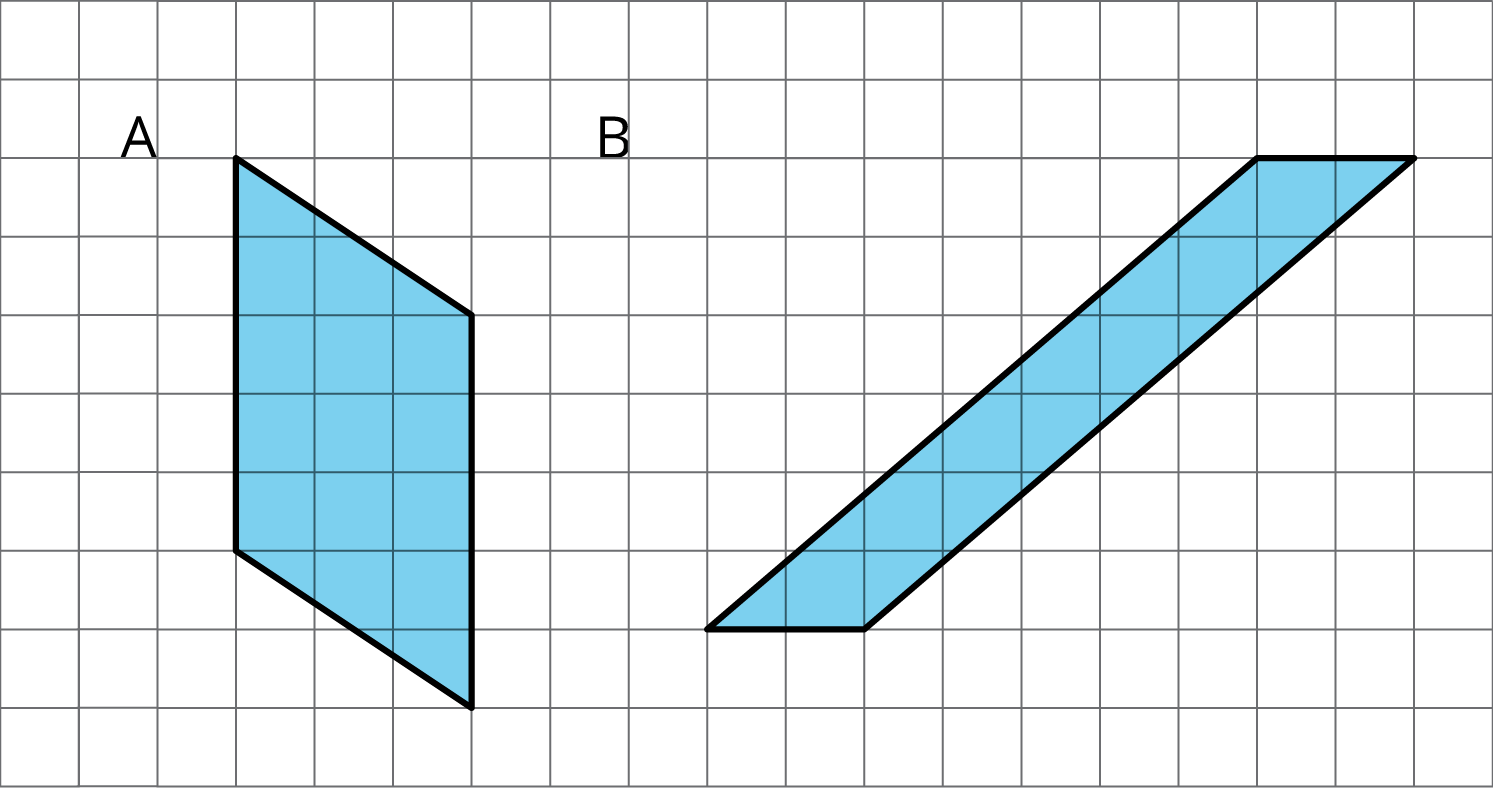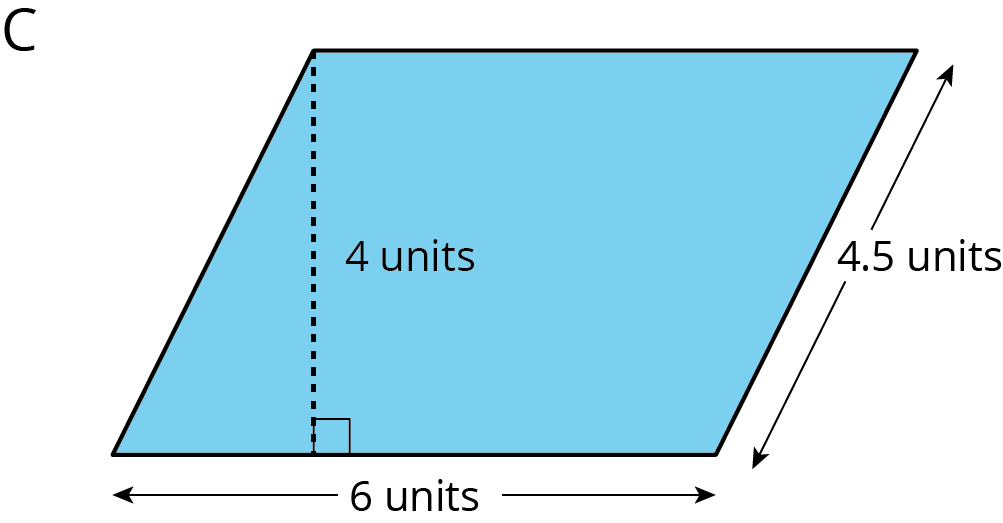A parallelogram is a quadrilateral (it has four sides). The opposite sides of a parallelogram are parallel. It is also true that:
- The opposite sides of a parallelogram have equal length.
- The opposite angles of a parallelogram have equal measure.
There are several strategies for finding the area of a parallelogram.
- We can decompose and rearrange a parallelogram to form a rectangle. Here are three ways:
- We can enclose the parallelogram and then subtract the area of the two triangles in the corner.
Both of these ways will work for any parallelogram.
For some parallelograms, however, the process of decomposing and rearranging requires a lot more steps than if we enclose the parallelogram with a rectangle and subtract the combined area of the two triangles in the corners. Here is an example.







